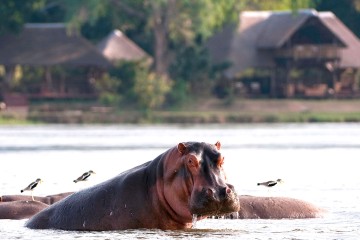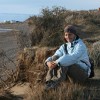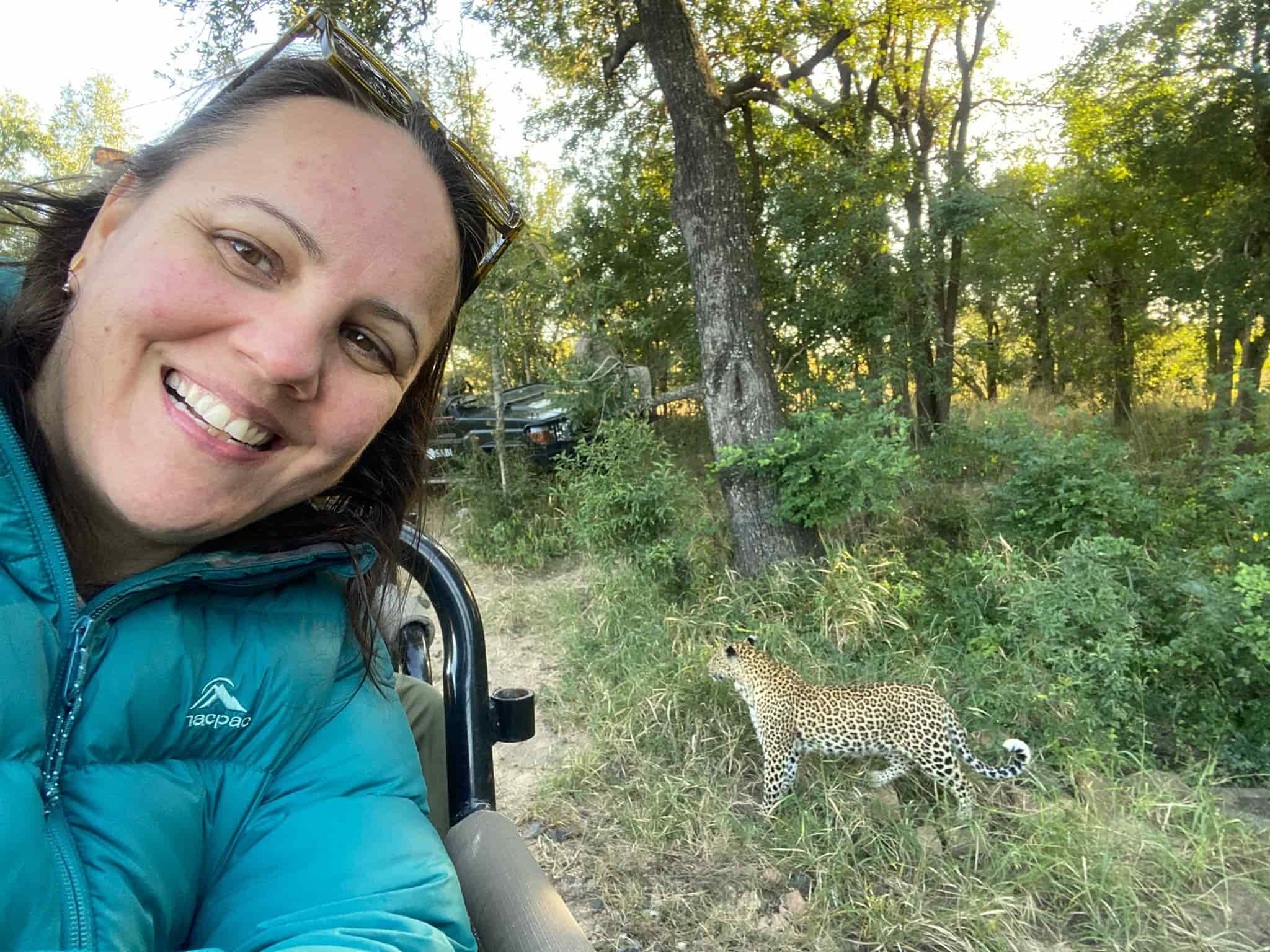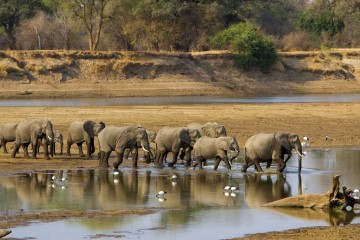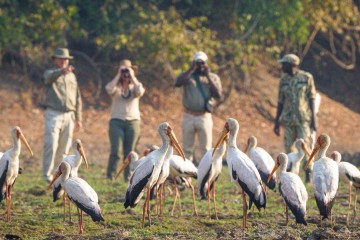TLDR: Zambia’s two premier safari destinations – Lower Zambezi and South Luangwa – are completely different in character and setting. Each offers an exceptional wildlife experience in its own right, but together, they form the ultimate safari combination. If you’re heading to Zambia in 2026, don’t pick one – do both.
Two Wild Worlds, One Unforgettable Safari
Zambia is one of Africa’s most rewarding safari destinations – still uncrowded, deeply immersive, and home to some of the continent’s best guides and small, character-filled camps. And while there are several parks worth visiting across the country, it’s the combination of Lower Zambezi and South Luangwa that really stands out.
One is lush and river-based, known for canoe safaris and peaceful boat cruises. The other is the birthplace of the walking safari, famous for leopard sightings and the dramatic dry season spectacle of predators and prey. Visit both, and you’ll discover the breadth and beauty of Zambia’s wilderness like nowhere else.
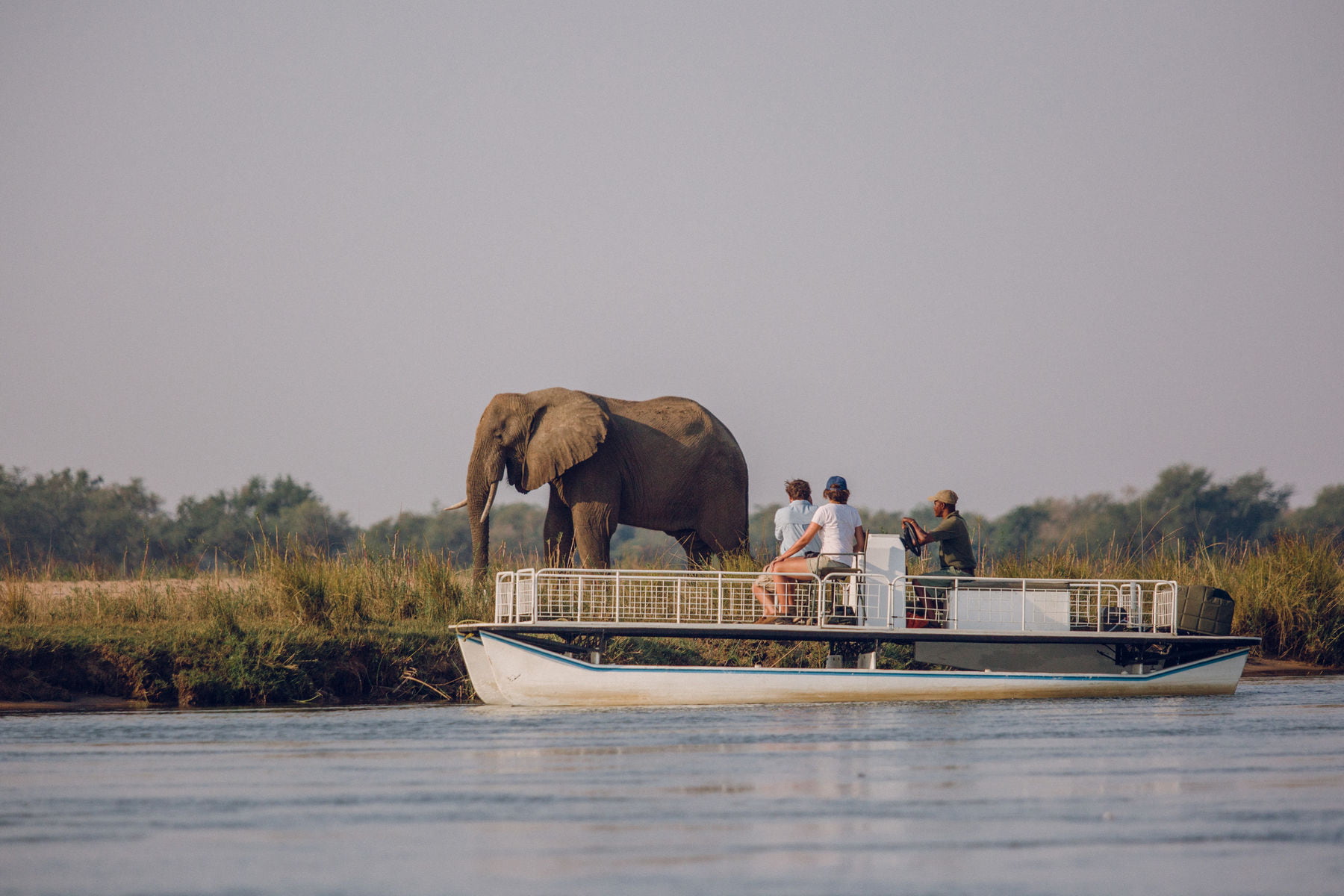
Both canoe and boat safaris in Zambezi River offers a heart-pounding thrill of getting up close to the wild.
Lower Zambezi: Elephants, Canoes, and Riverfront Magic
Bordering the Zambezi River and facing Zimbabwe’s Mana Pools National Park, Lower Zambezi is a lush, riverine landscape backed by the escarpment, teeming with wildlife. Here, you’re more likely to hear the grunts of hippos and the splash of fish eagles than the sound of another vehicle – this park is wild, peaceful, and deeply soulful.
>Discover more about Zambezi with our: Lower Zambezi Encounter tour
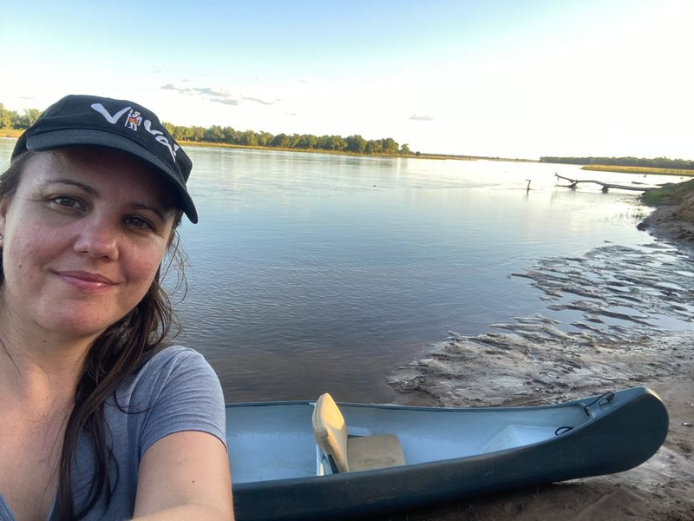
Tanya from Viva enjoying a canoe trip on a river safari in the Zambezi.
Why You’ll Love It:
-
Water-Based Activities: You can canoe silently past pods of hippos, go tigerfishing with a local guide, or float on a boat safari at sunset. These experiences are unique to the Lower Zambezi and offer a whole new way to explore Africa’s wilderness.
-
Intimate Camps, Big Wilderness: Many of the camps here are small, solar-powered, and hidden under canopies of Winterthorn trees. You’ll often fall asleep to the sound of elephants feeding outside your tent.
-
Uncrowded Safari: With no mass tourism and just a handful of lodges in the park, you’ll often feel like you have this Eden to yourself.
Wildlife Highlights:
Elephants abound, and large herds often swim between islands in the river. Leopard are frequently sighted, and this is also a good place to look for wild dogs and bushbuck. You won’t find giraffe or wildebeest here, but the sheer volume of big game more than makes up for it.
“Kutali Camp was my favourite – I absolutely loved the Winterthorn trees and the view over the river. It felt raw and real, just how a safari should be.”
– Tanya Gurtin, Viva Expeditions
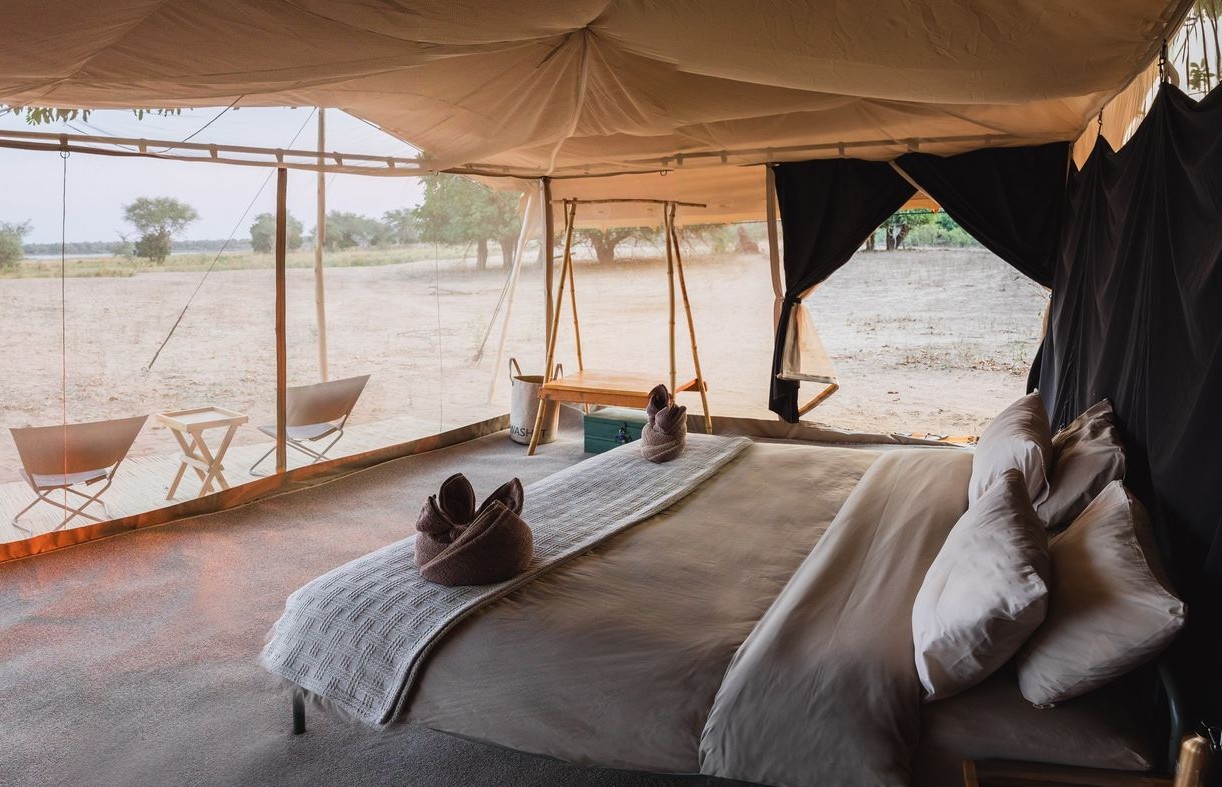
From cozy beds to thrilling canoe safaris — Chula Camp is your gateway to comfort and adventure.
Recommended Camps:
-
Kutali & Chula: Sister camps offering walking safaris, canoeing, boating, and game drives with exceptional guiding. Rustic but comfortable and full of character.
-
Lolebezi: Stylish and sleek – ideal for those looking for comfort with direct access to the Zambezi.
-
Anabezi: Elevated walkways, excellent guiding, and high wildlife concentrations in the eastern section of the park.
>Check our Ultimate Zambezi & Luangwa Safari here
South Luangwa: Walks, Leopards & Classic Safari Charm
Known as the home of the walking safari, South Luangwa is a land of oxbow lagoons, open plains, and dense forests – its varied terrain attracts a huge range of animals, including leopard, lion, giraffe, and wild dog. It’s one of the most predator-rich areas in all of Africa, and its reputation for superb guiding is well deserved.
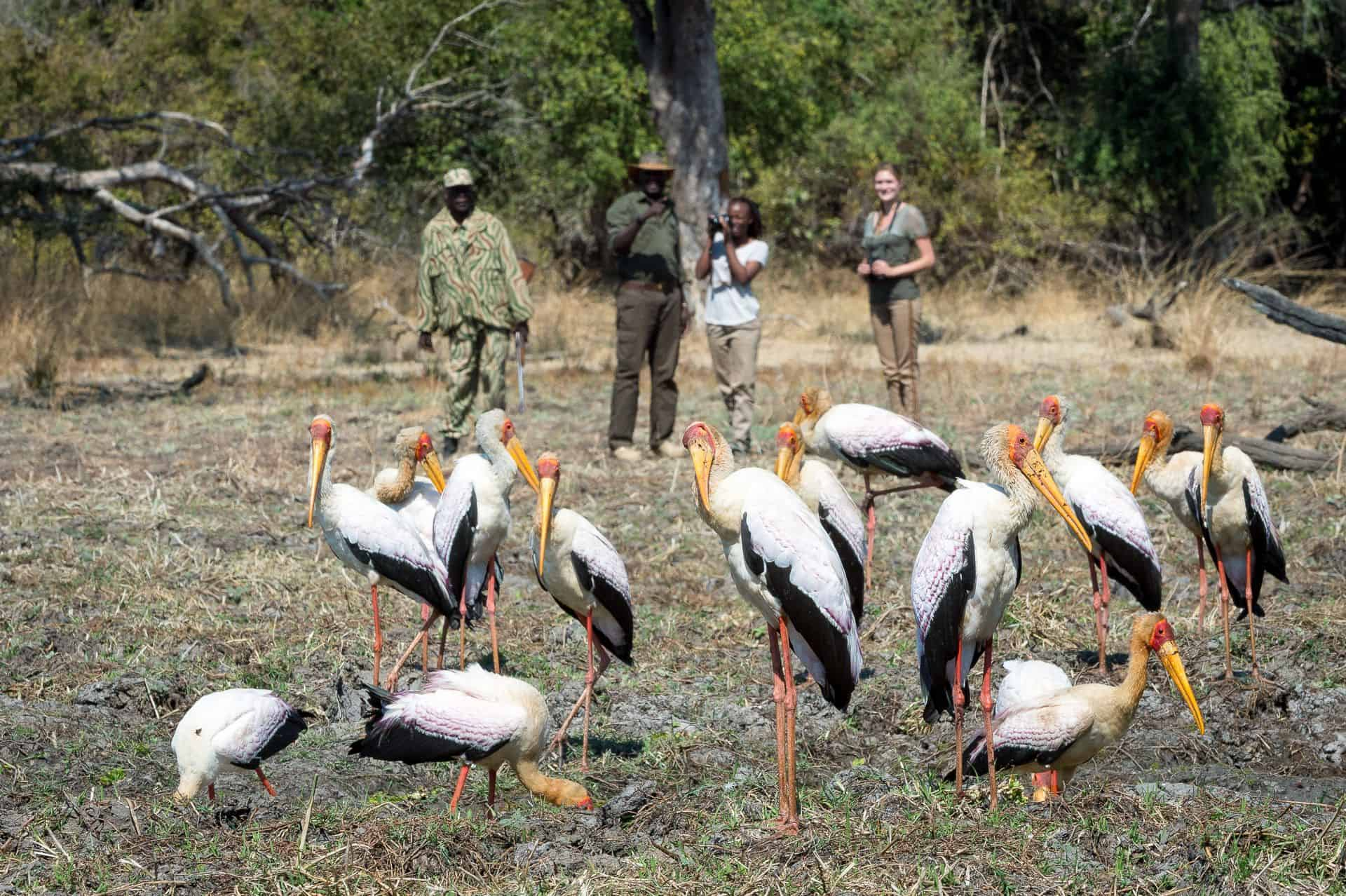
Walk slowly, listen carefully — South Luangwa reveals its wildlife in moments you’ll truly remember.
>Discover our Luangwa Wilderness Trails tour here
Why You’ll Love It:
-
Unmatched Walking Safaris: This is where the concept of the walking safari was born. Guided by an armed scout and expert naturalist, you’ll explore the bush on foot and get closer to the land, tracking animals and learning about the ecosystem from the ground up.
-
Diverse Landscapes: The Luangwa River and its many tributaries create rich, fertile habitats. The landscape changes dramatically depending on the season, from dry plains to lush floodplains.
-
Incredible Predator Sightings: South Luangwa is often dubbed "The Valley of the Leopard" – and with good reason. This is one of the best places in Africa to see these elusive cats, alongside wild dog, lion, and hyena.
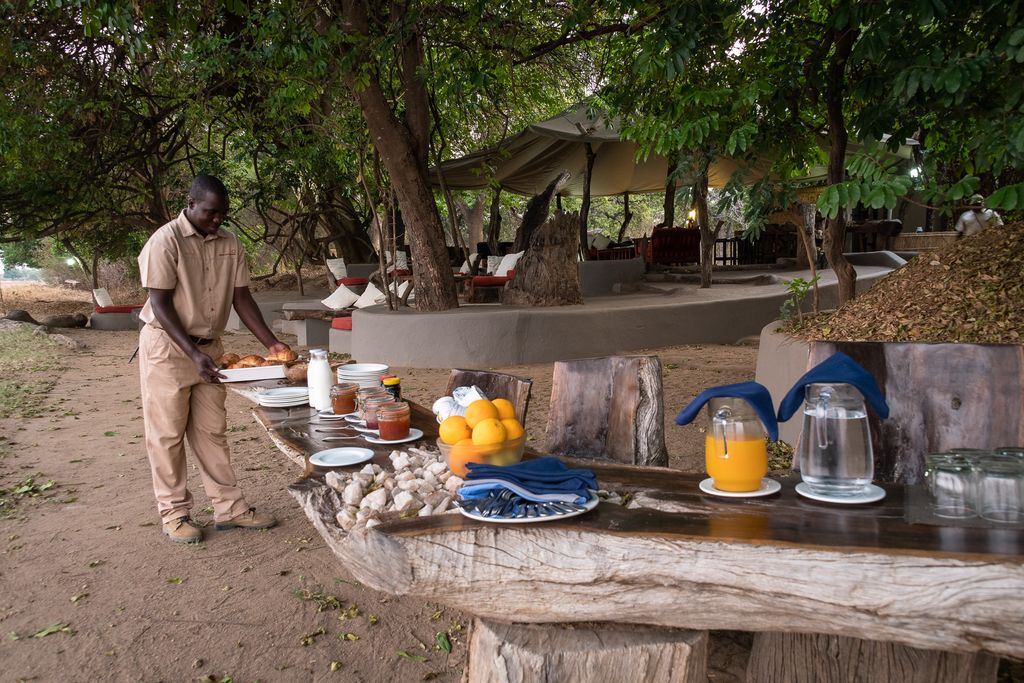
Taste the local flavors, freshly prepared by the team at Camp Tena Tena all while enjoying the scenic river view.
“Tena Tena had some of the best food I’ve ever had on safari – and the location near the river made it really special. Mwamba, deep in the bush, felt like a true wilderness escape. I suggest staying in two different camps to really experience what South Luangwa has to offer.”
– Tanya Gurtin, Viva Expeditions
When to Come for Bee-Eaters
If seeing the dazzling carmine bee-eaters is on your bucket list, plan your visit for August to early October (with September being the most reliable), when these vibrant birds nest in colonies along the riverbanks of South Luangwa. Thousands gather, and their striking red plumage and acrobatic flight make for one of Africa’s most colourful natural spectacles.
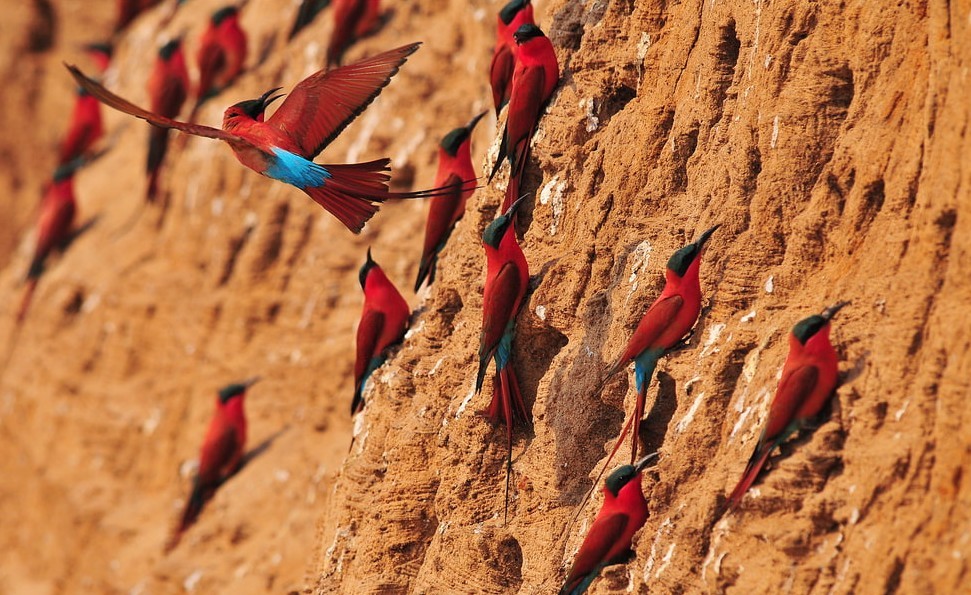
Experience the magic of South Luangwa through the dazzling display of carmine bee-eaters.
Where to Stay for Bee-Eaters:
• Kaingo Camp: Home to a legendary Bee-Eater Hide built into the riverbank, putting you at eye level with the colony – a photographer’s dream.
• Mwamba Bush Camp: Remote and authentic, this camp also benefits from proximity to the riverbanks where colonies are found.
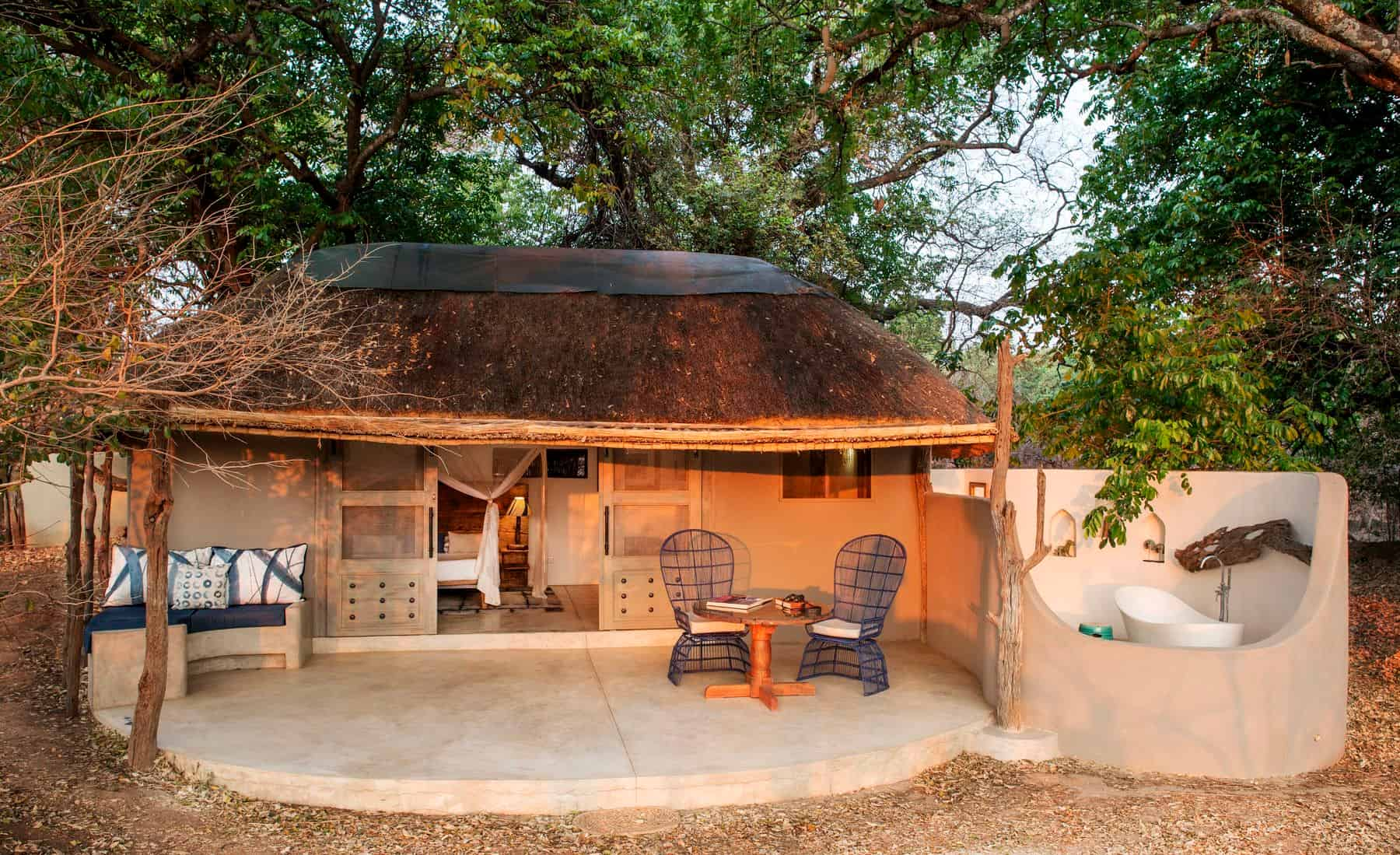
Nestled in the heart of South Luangwa, Kaingo Camp’s chalets offer comfort, stunning river views, and true safari immersion.
Shenton Safaris' Photographic Hides
Shenton Safaris’ hides are some of the best in Africa. From ground-level elephant viewing to hippos underwater and carmine bee-eaters mid-flight, these hides bring you closer than ever before. They’re purpose-built with photographers in mind but equally thrilling for anyone who loves observing wildlife from a fresh perspective.
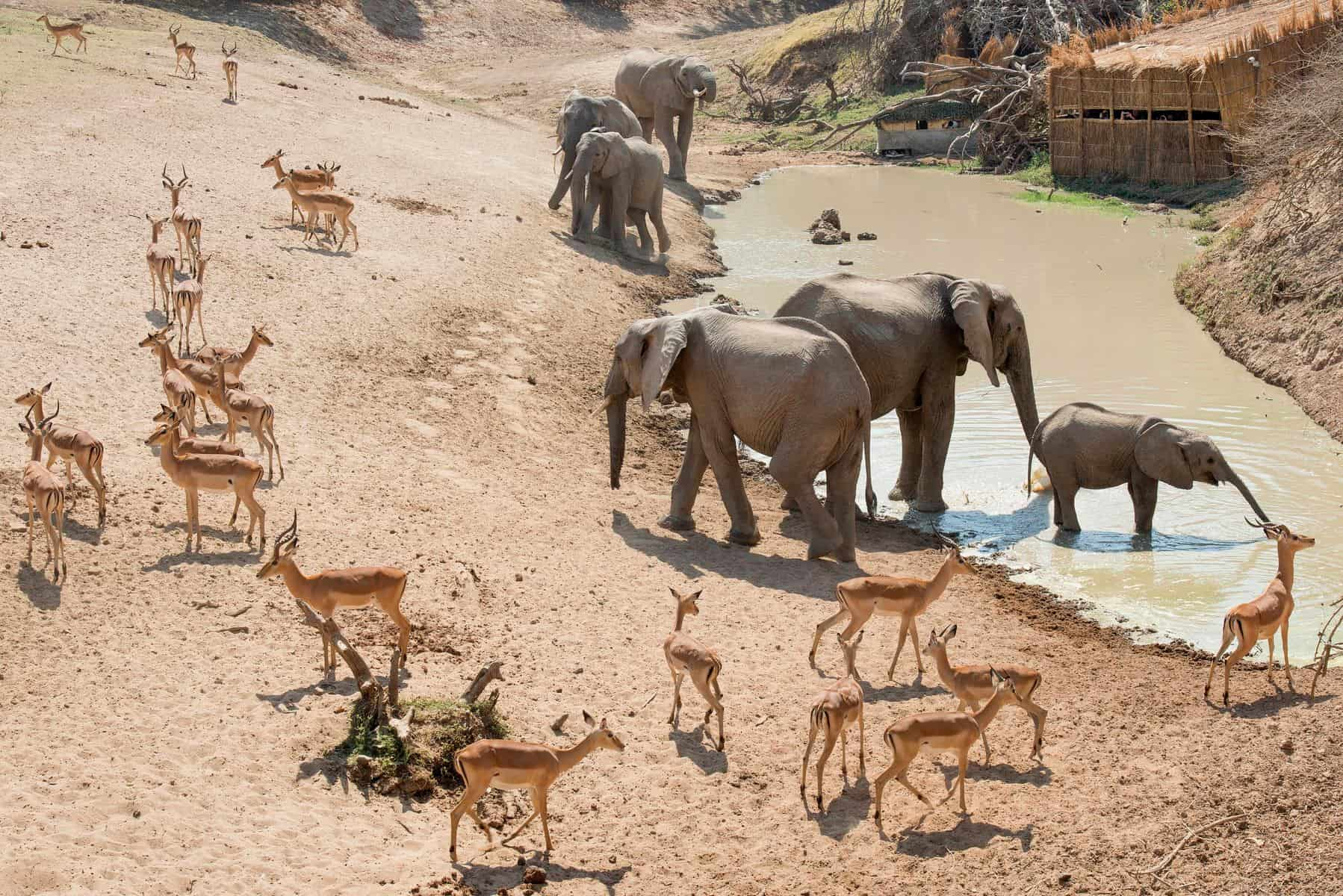
Watch elephants up close — safely hidden in Shenton Safaris’ legendary Elephant Hide.
Don’t miss:
• The Elephant Hide: Watch as giants gather to drink just metres away.
• The Hippo Hide: See submerged hippos and crocs from a sunken viewing platform.
• The Carmine Bee-Eater Hide: One-of-a-kind access to these birds in full nesting mode.
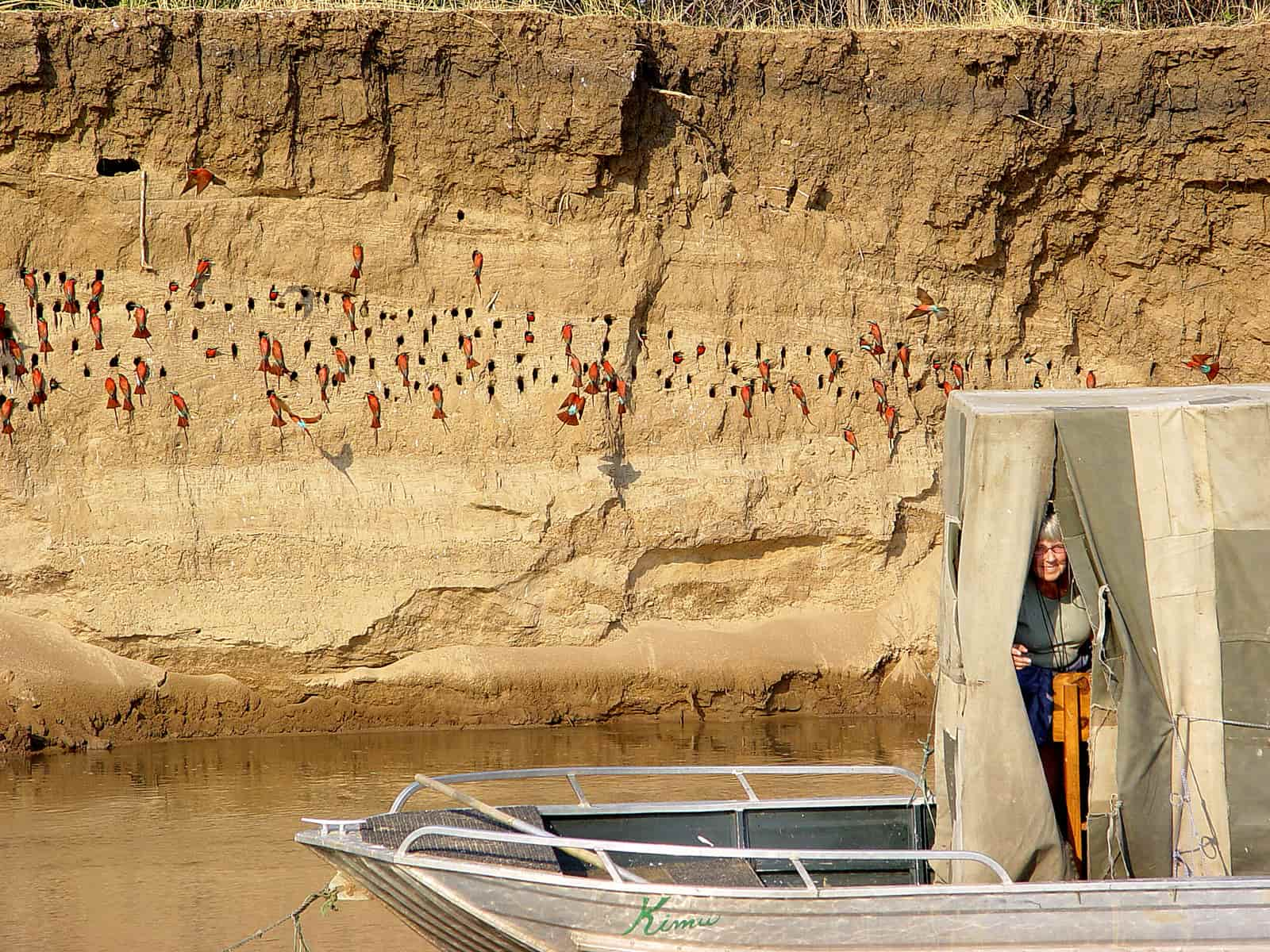
Drift silently to witness nature’s vibrant architect at work, carving its nest with precision.
Wildlife Highlights:
In addition to high predator numbers, South Luangwa is home to giraffe (the endemic Thornicroft's giraffe), wildebeest, large herds of buffalo and elephant, and 400+ bird species, including carmine bee-eaters nesting in the riverbanks in September and October.
Recommended Camps:
-
Kaingo & Mwamba: Renowned for their unique photographic hides and excellent wildlife viewing. Mwamba is remote and wild – a great base for walking.
-
Tena Tena: Intimate, classic, and ideally placed in the Nsefu sector. A good blend of comfort and character.
-
Flatdogs Camp: A flexible, welcoming option that’s great for families, solo travellers, and first-time safari-goers.
-
Mchenja (Time + Tide): Stylish and luxurious with riverside suites and top-tier guides. A good option to end a trip on a high note.
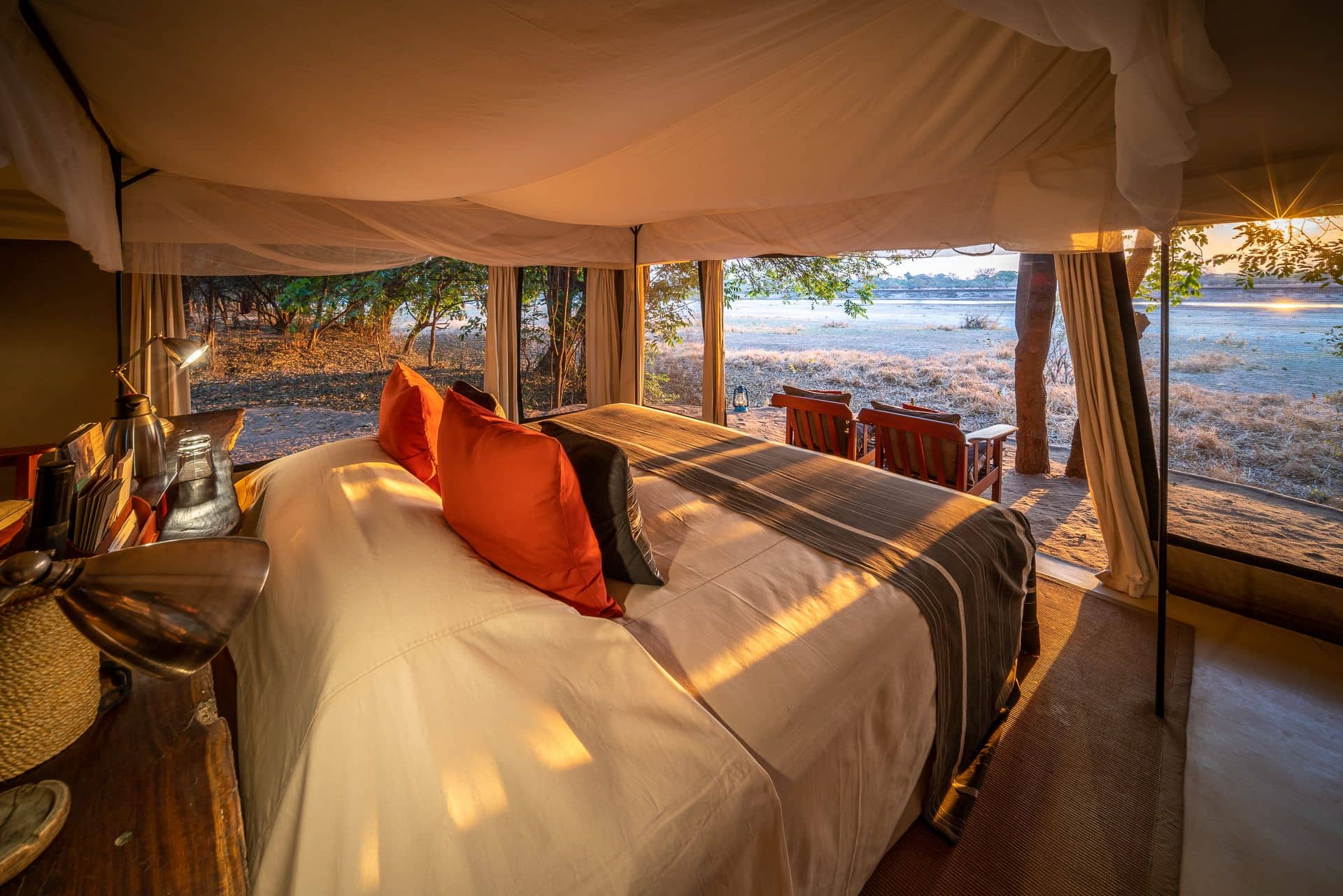
Tena Tena offers ensuite tents, open-air dining, and front-row views of South Luangwa’s wildlife.
Lower Zambezi vs. South Luangwa – or Both?
|
Feature
|
Lower Zambezi
|
South Luangwa
|
|
Landscape
|
Lush riverbanks, escarpment views
|
Dry woodlands, lagoons, open plains
|
|
Activities
|
Canoeing, fishing, boating, walking, drives
|
Walking safaris, game drives, hides
|
|
Wildlife
|
Elephant, hippo, wild dog, leopard
|
Leopard, giraffe, wild dog, wildebeest
|
|
Atmosphere
|
Remote, serene, river-focused
|
Classic safari, varied habitats
|
|
Camp Style
|
Small, eco-focused tented camps
|
Mix of rustic and luxury bushcamps
|
Together, these parks offer a safari of contrasts: the cool green calm of the Zambezi, and the warm, wild drama of South Luangwa. Where one excels in watery tranquility, the other thrills with raw, dry-season energy.
Tanya’s Top Tips for Travelling to Zambia in 2026
-
Visit Between July and October: This is the prime safari season, with dry weather and excellent wildlife visibility.
-
Stay at Two Camps in Each Park: If time allows, we recommend at least four nights in each park, split between two camps. This gives you the chance to experience different areas and styles.
-
Pack Light, Bring Layers: Early mornings and evenings can be cool, but midday heats up. Light, neutral clothing and a good pair of walking shoes are a must.
-
Book Early: Zambia’s top camps are small and intimate, often with just 4–8 rooms. They book out early, especially in peak season.
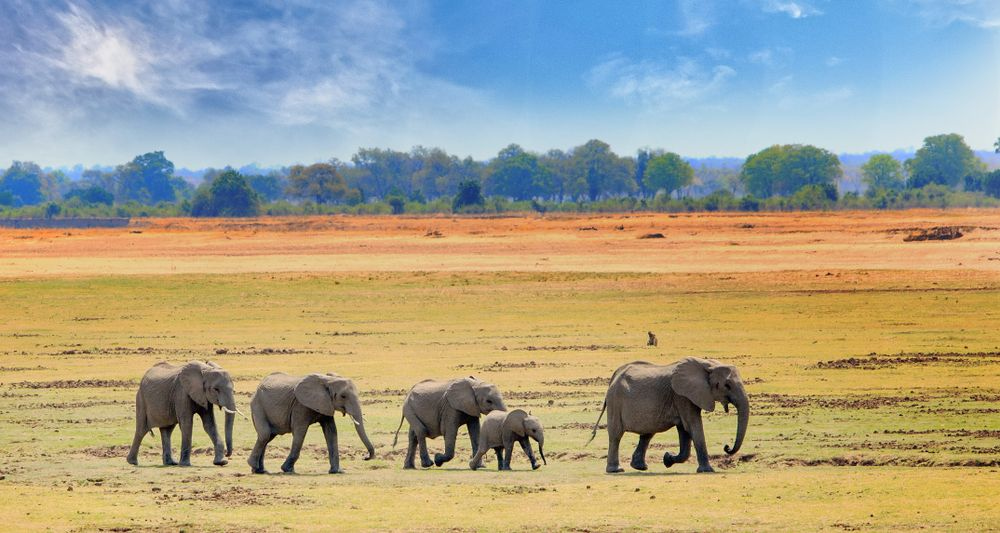
>Also check our Luangwa & Kasanka: Safari & Spectacle tour here
Ready to Plan the Ultimate Zambia Safari?
Whether you're floating down the Zambezi at sunset or tracking leopard footprints in the Luangwa dust, Zambia offers one of the most immersive safari experiences in Africa. It’s raw, real, and unforgettable – and best of all, it’s still remarkably uncrowded.
Let us help you design your perfect Zambia journey. We’ll craft a tailor-made itinerary with the best camps, unforgettable activities, and seamless connections between Lower Zambezi and South Luangwa.
Contact Viva Expeditions to begin your Zambia safari in 2025.
